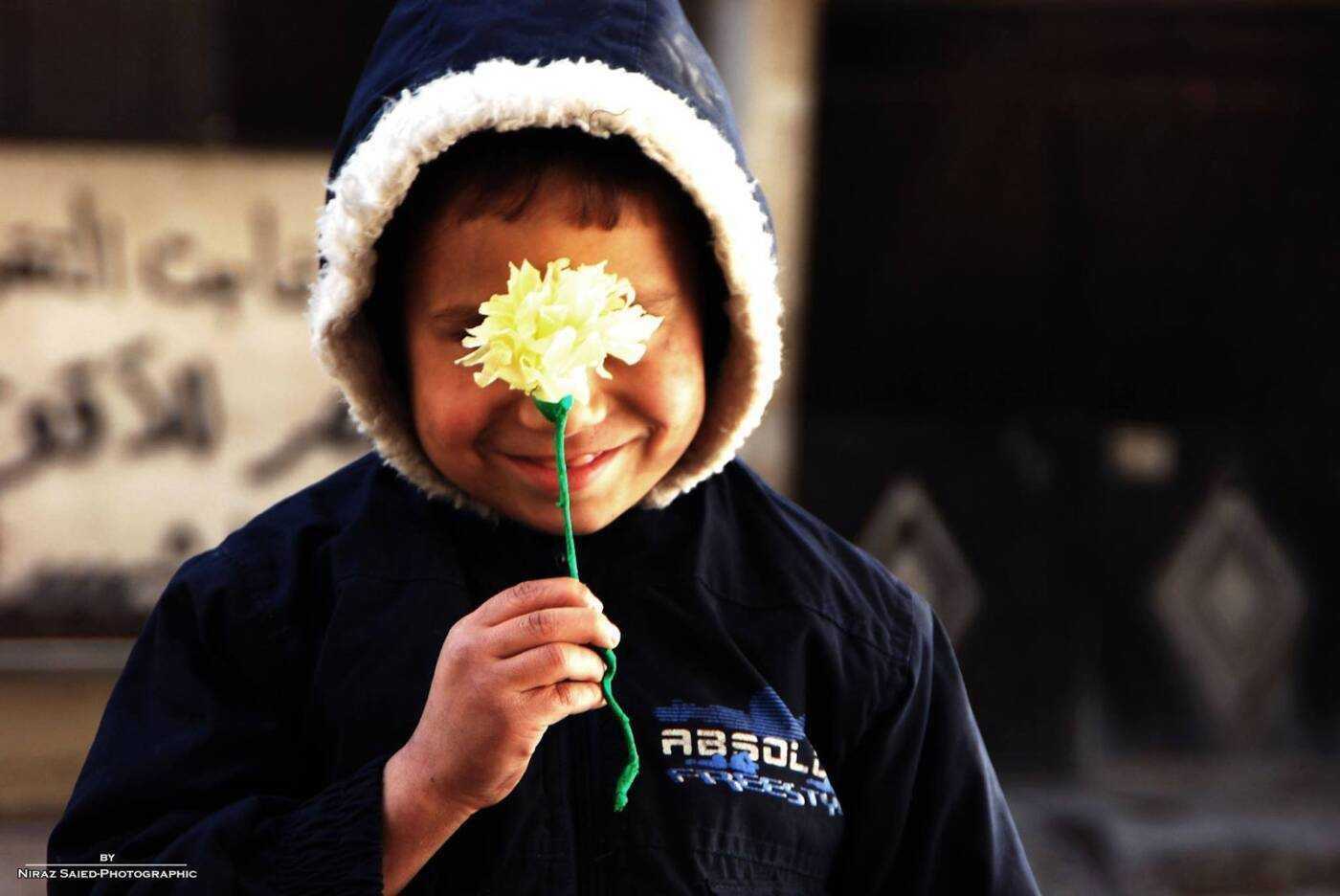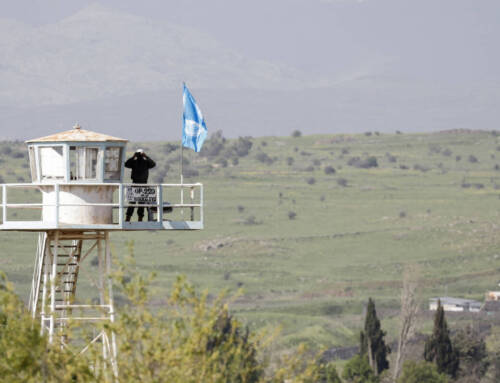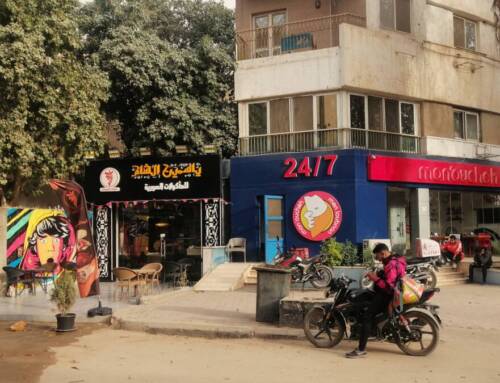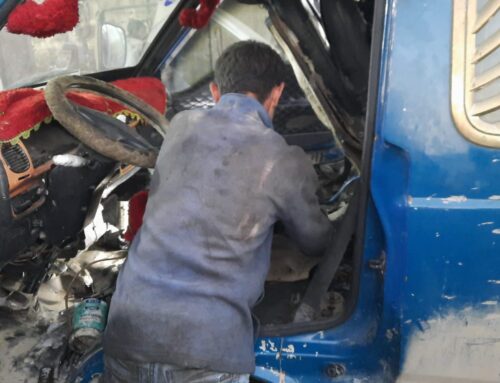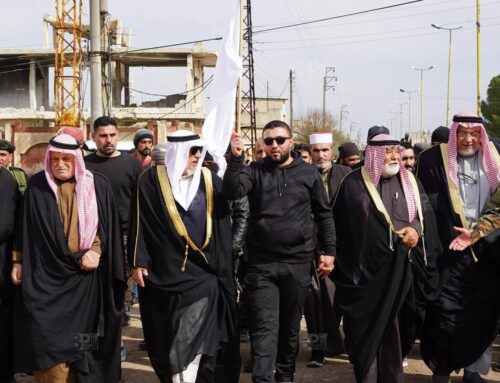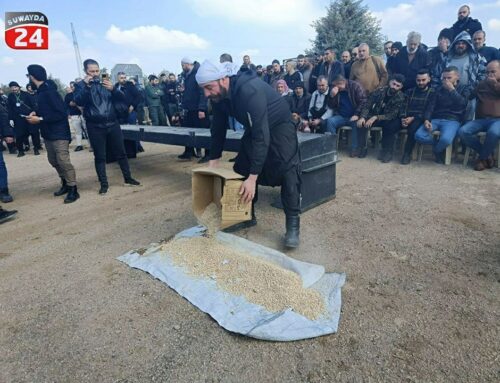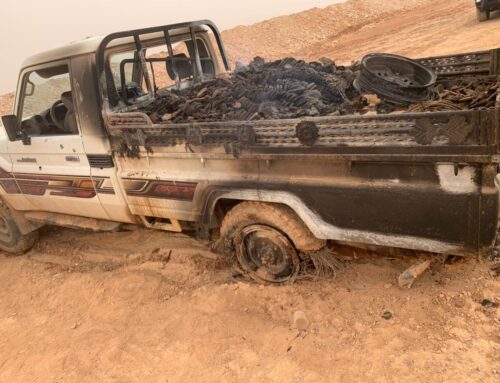‘The photos he left behind speak for themselves’: Remembering the work of Yarmouk photographer Niraz Saied
Two Yarmouk residents in 2015. Photo courtesy of Niraz Saied. […]
25 July 2018

During the days of the siege, young photographers and media activists Niraz Saied and Ahmad Abbasi combed the streets of Yarmouk—once Syria’s largest Palestinian community—in search of the untold stories within the encircled pocket of the south Damascus suburbs. Defying shelling, starvation and threats from just about every side of the conflict, the two dedicated their lives to making the voices of Yarmouk heard.
“Niraz is one of the many photographers and journalists in Syria who sacrificed everything they had, their life and their future,” Abbasi tells Syria Direct’s Mohammed Al-Haj Ali.
Last week, Saied’s long-time partner Lamis al-Khateeb, who now resides in Europe, announced on her Facebook profile that Saied had died in Syrian government prison, after years in captivity.
“There’s nothing harder than writing these words,” she wrote, “but Niraz doesn’t die in silence.”
In this interview with Syria Direct, a week after al-Khateeb’s announcement of Saied’s death, his close friend and fellow photographer Ahmad Abbasi commemorates the legacy Saied left behind for the Palestinian community in Syria—and specifically Yarmouk.
“He was more creative and artistic than…all of the other [activists] who stayed behind,” Abbasi says. While he and remaining activists continued to photograph and document life in south Damascus after Saied’s disappearance in 2015, he says that their work was always “missing that final touch.”
Saied’s photograph, “Three Kings,” won worldwide recognition and praise when it won the UNRWA’s youth photography competition in 2014. The photo, in grainy black and white, depicted three brothers from Yarmouk waiting in line to be transferred out of the camp for medical treatment.
Although not larger than two square kilometers, before 2011 Yarmouk was the largest Palestinian community in Syria, home to more than 160,000 Palestinians. It was also one of the Palestinian diaspora’s most symbolic sites.
Syria’s uprising slowly made its way inside the camp despite some early attempts by activists and community groups to remain neutral, before December 2012 when the Syrian Air Force bombarded Yarmouk and rebels stormed the camp the following day. By early 2013, the camp was encircled with movement in or out restricted.
It was then that Saied returned from his temporary exile in Algeria, determined—according to Abbasi—to “stand by the side of the besieged in the camp.”
In June 2013, the Syrian government and its allies imposed a total siege on the Palestinian camp, denying the entry of basic food items, medical supplies and fuel while leaving some of the camp’s residents on the brink of starvation. Some 1,355 Yarmouk Palestinians are estimated to have died nationwide since the beginning of the conflict, including more than 200 under siege in the camp, who perished as a result of starvation and lack of access to medical care, according to a report by the Action Group for Palestinians of Syria (AGPS).

When the Islamic State (IS) took control over most of the camp in the spring of 2015, Saied and Abbasi—along with fellow activists and thousands of families—fled to the neighboring opposition-held area of Yalda. A few months later, a secretive agreement between the Palestine Liberation Organisation, Syrian authorities and pro-government Palestinian community figures facilitated the exit of Saied along with at least a dozen other activists into Damascus. While most managed to flee the country to safety shortly afterwards, according to Abbasi, Saied was handed over to the authorities and forcibly disappeared in October 2015. Saied’s family and friends would never hear from him again.
Abbasi himself left south Damascus for Deir Ballut, a displacement camp in opposition-held northern Syria, in May this year as part of a Russian-brokered reconciliation deal between rebels and the Syrian government, allowing for the evacuation of residents to rebel-held areas in northern Syria. He has since relocated to Turkey.
And while news of Saied’s passing has devastated Abbasi, he remains confident that his friend’s legacy will live on.
“They executed Niraz to silence him,” he says, “but the photos he left behind speak for themselves.”
Q: How did Niraz’s disappearance and the recent news of his death affect you?
It breaks the heart and the soul.
We’d been friends since 10th grade, and we lived and worked together during the crisis. I held my camera and he held his. We spent our whole life together and we shared everything together. Together, we tasted bitter and sweet alike.
The moment I learned that Niraz had died, I lost all of the strength I had inside me and I felt loss. We were supposed to realize our dream together and continue living together. But you can’t always get things the way you want. Niraz will stay in our hearts today, tomorrow and to the end of our lives.
It is hard for any person in the world to bear the torture and monstrousness that the regime subjects detainees to, so we were always afraid to hear the news of his death. Often we’d hear from here or there that he had actually died, but it always turned out to be lies.
I still have hope that everything turns out to be a lie and that Niraz didn’t die.
Q: What is, in your opinion, the most important photo that Niraz took?
All of Niraz’s photos were important, but the photo of the “Three Kings” was different because it conveyed how miserable the situation was in the camp at that time. The photo expressed all of the pain that the regime had managed to confine inside [the camp].

Q: How did the disappearance of Niraz impact civil society in the camp?
When Niraz left [Yarmouk], we lost one of the most important people who could convey the picture in the right way.
Niraz was raised among the masters of photography about 10-12 years before the beginning of the crisis. He had made multiple films and exhibitions before the crisis.
He was in Algeria, but when the crisis started, he returned to the camp [because] he wanted to stand by the side of the besieged in the camp.
He was more creative and artistic than myself and all of the other [activists] who stayed behind. So after [he disappeared], we managed to carry on taking and sending pictures, but we always felt that he was missing, that we were missing that final touch.
His absence had a great effect on public opinion, the number of people following what was happening, the interest of international journalists.
Q: Palestinians are often considered caught in between the different sides of the conflict. How did you and Niraz position yourselves in that context?
I would always talk to Niraz about this issue. There was a lot of pressure—we were stuck in between the two jaws of a pincer. As Palestinians we stood by with the Syrian people while they were subjected to the ugliest forms of torture and killing, simply for demanding the fall of the president. We believed in the right of the people to determine their own fate and it was our duty to stand by the children of Homs and Daraa and Aleppo and other Syrian cities. We believed in a peaceful Syrian revolution.
[When] IS entered the camp in April 2015, Niraz, the other activists and I—as well as a large number of families—left the camp towards Yalda, which was under the control of the opposition at that time.I wasn’t able to enter the camp because I wasn’t only wanted by the government, but also by Daesh as well.
Q: What kind of legacy did Niraz leave behind for the Palestinians in the Yarmouk camp and in Syria more generally?
Along with many other media activists, Niraz managed to communicate the voices of the besieged to the world. This gave them a great deal of moral support and motivation despite all of the pain they were living through.
They executed Niraz to silence him, but the photos he left behind speak for themselves. The whole world has seen them. Until this day, you only need to look at his photos—without reading the captions—and they will tell you everything about the misery and pain, and in some cases hope, that was [in the camp].
Niraz is one of the many photographers and journalists in Syria who sacrificed everything they had, their life and their future so that we wouldn’t die in silence.

